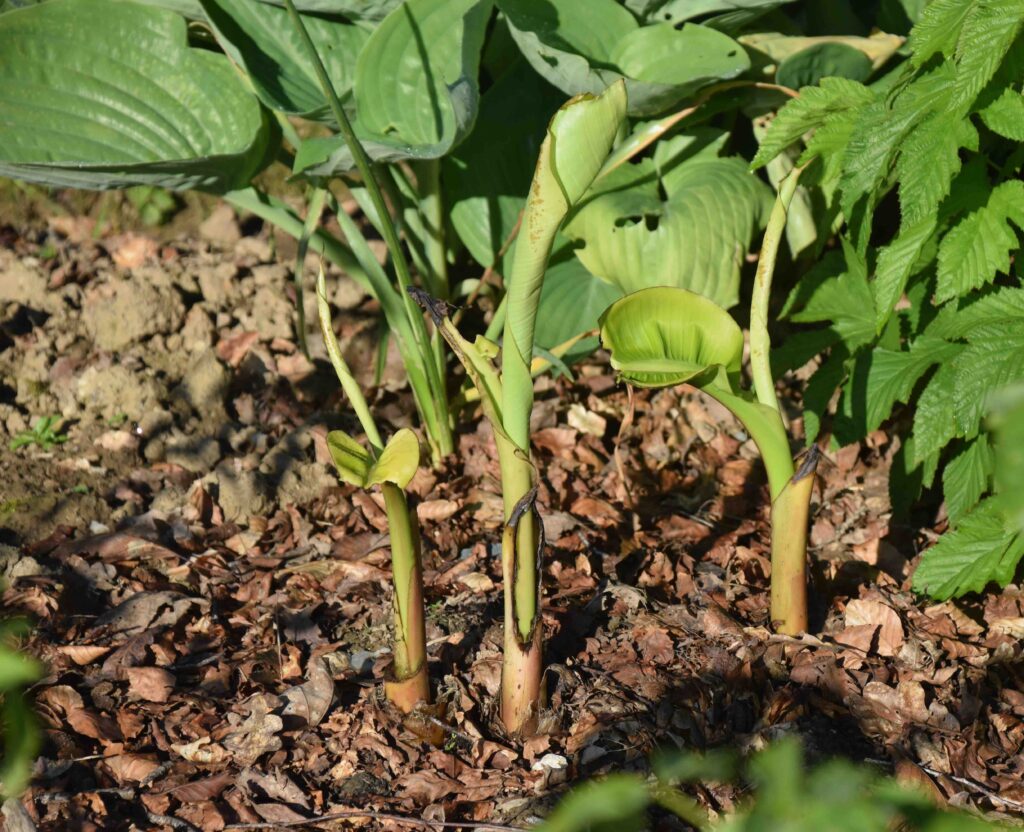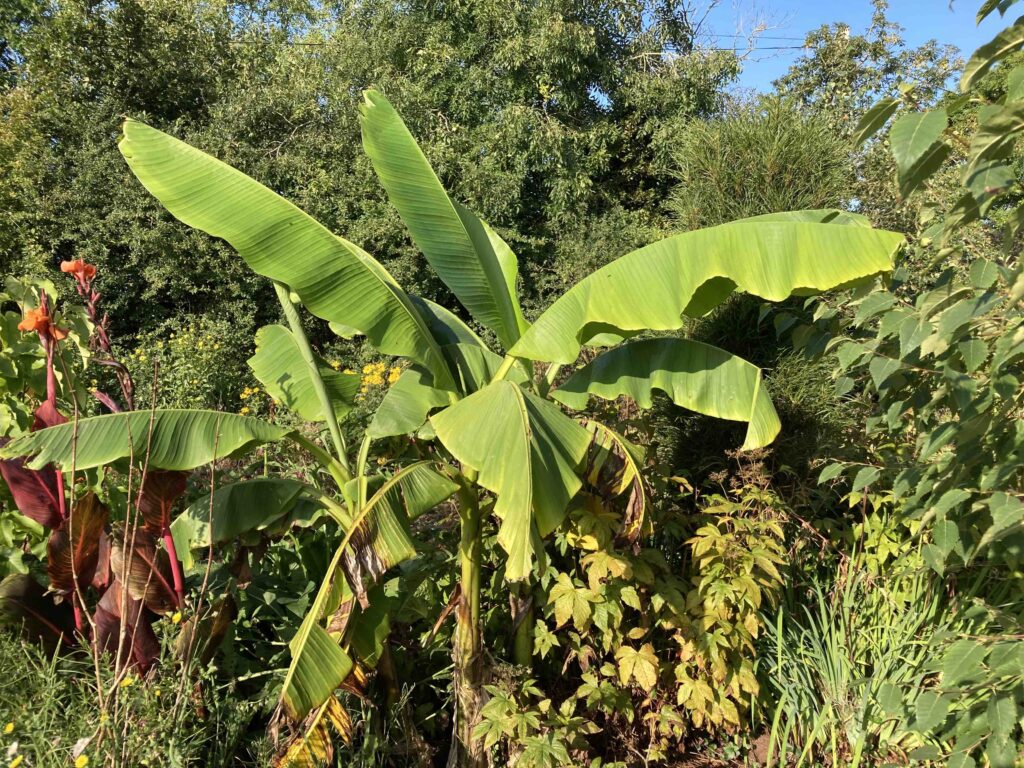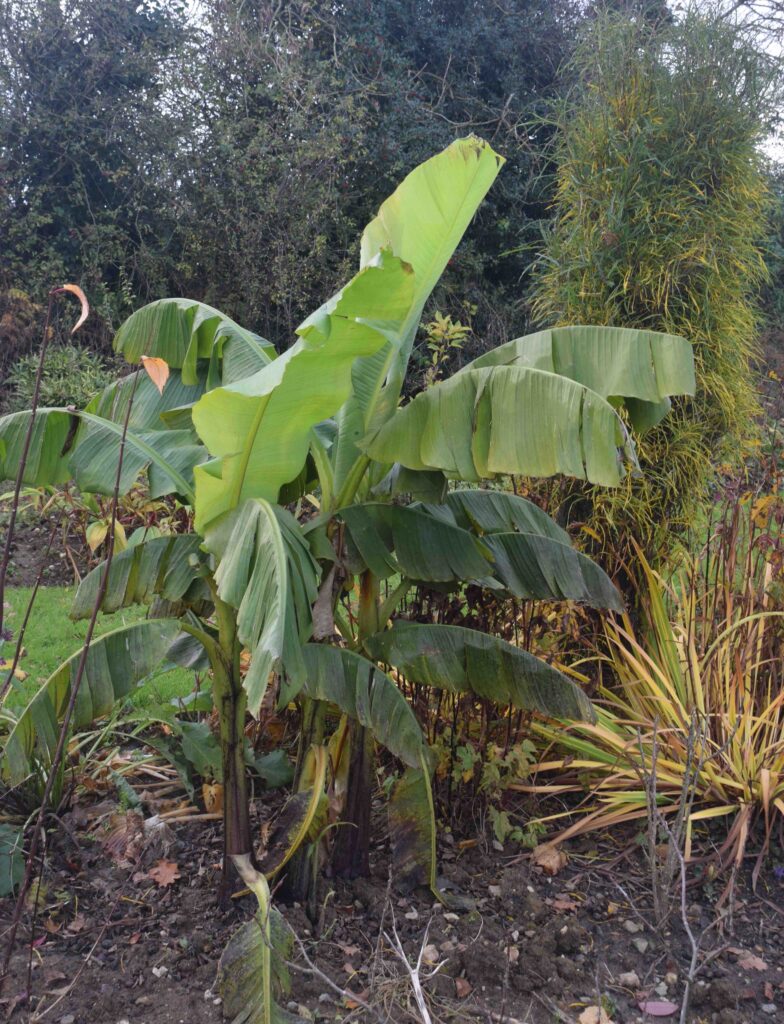
Gardeners love to experiment and grow new things. Once regarded as a novelty, bananas are seen in more gardens every year. They bring a touch of the tropics to any garden – even mine! (above).
As autumn approaches, we need to think about protecting tender plants from frost. One of the plants that I really enjoy in my garden is the hardy banana (Musa basjoo). Hardiness is relative and a severe winter might kill the plant entirely but in an average winter this species is generally regarded to be hardy, though some protection is useful. It is the most popular banana grown in UK gardens and is widely available. Like all bananas it is a large, herbaceous perennial that produces ‘false stems’ of huge leaves from a semi-woody rootstock. It is not a tree. The growing point is at ground level which is why, if badly frosted, it will send up new shoots from the base.
There are other bananas available but Musa basjoo is the most common and the best to start with. But you will also see the red-leaved form of Ensete ventricosum, the Abyssinian banana. This is not a true banana and will not produce basal shoots if frosted so must be kept in a covered, frost-free place in winter.

But back to bananas. In the garden they grow best in rich, moist soil and in a place that is not too windy. Wind rips the large leaves.
Young plants definitely need protection from winter cold. If the stems are frosted they may sprout from the base but young plants will not have a large, woody crown from which shoots may sprout. So young plants, in pots, are best kept in a greenhouse the first year. That is what I did.

If the stems are not protected from frost they may be killed to ground level and new shoots will grow in spring. This is my plant that had one shoot and was simply protected with a loose mulch of leaves. The main stem was killed but three new shoots were produced in spring.
If this happens every year you will never get tall ‘false stems’ with arching foliage – the sort of look that most people want. So, in subsequent years I protect these from cold so they do not get killed to ground level. So now those three stems have persisted for several years.

When protecting any plant from frost you need to insulate the plant but not constrict it or prevent air movement otherwise the plant can rot. You also should not have the protection in place for too long or it may encourage early growth in spring that might be weak if there is poor light or might get frosted later in winter. A careful balance is needed.
It is best to wait till the first frost of autumn to start the protection. Then cut off all the leaves to the top of the ‘stem’. In most years I construct a cage, the height of the stems, with chicken wire, supported with canes and fill this with dead bracken, straw or leaves. I put a fleece or plastic cover on this to keep out water. This provides a loose, airy insulation. Never put plastic around the plants or wrap too tightly.

Last year I made a wigwam of old, herbaceous stems from perennial sunflowers around the plant and that worked well.
Once removed, new foliage will unfurl from the top of the stems. Then is the time to give a mulch of compost and fertiliser to encourage growth.

Bananas are unbeatable if you want a tropical look in the garden and they are really not difficult to grow successfully. Just be aware that they are not reliably hardy when small. So if you bought and planted one this year, you must protect it from cold. Small plants are best kept undercover the first year. Established plants can be simply protected with a loose mulch at ground level but the stems may not survive and your clump will never have the impact it could. Protecting the stems will ensure the plants make maximum impact.

Wildlife talk
I am delighted to be back to give my last talk of the year next in a few weeks time. The topic is about making your garden a haven for pollinators and other wildlife. Booking is required and tickets cost from £5. I look forward to seeing you there. https://www.knightsgardencentres.com/webshop/events/talks-workshops